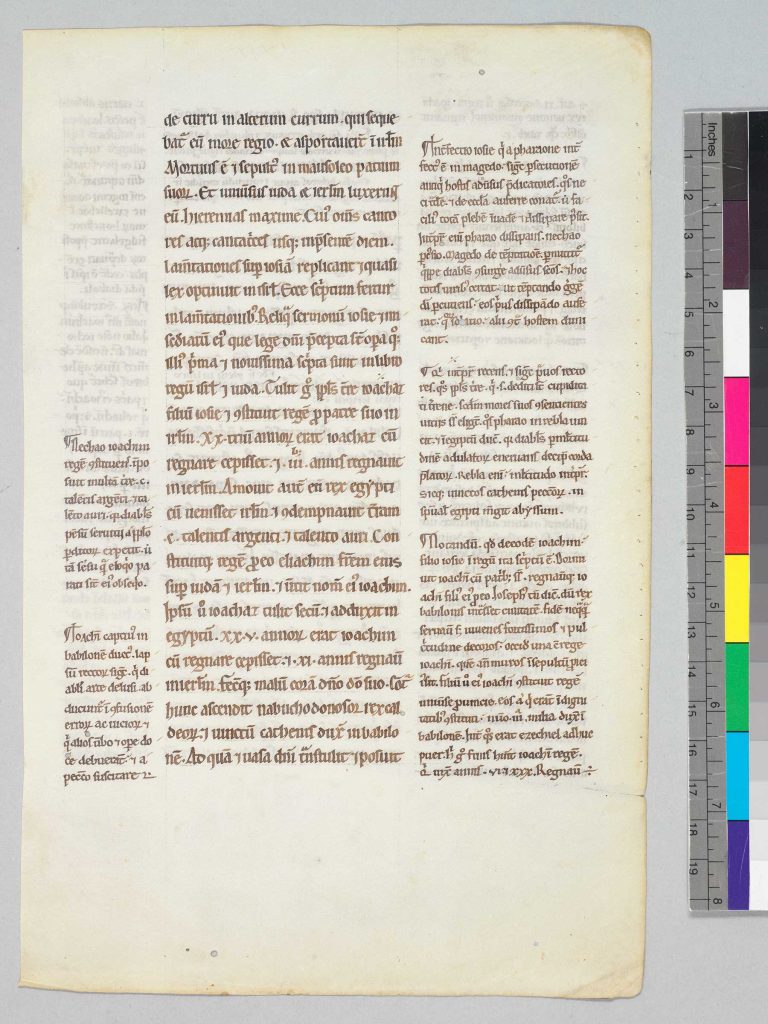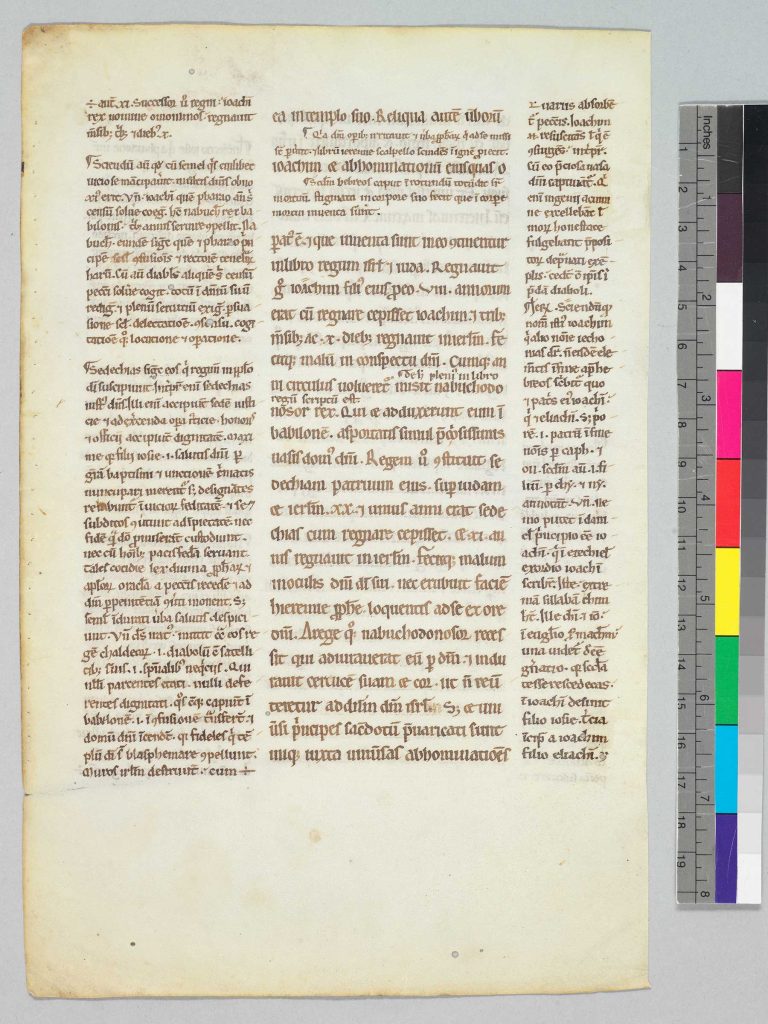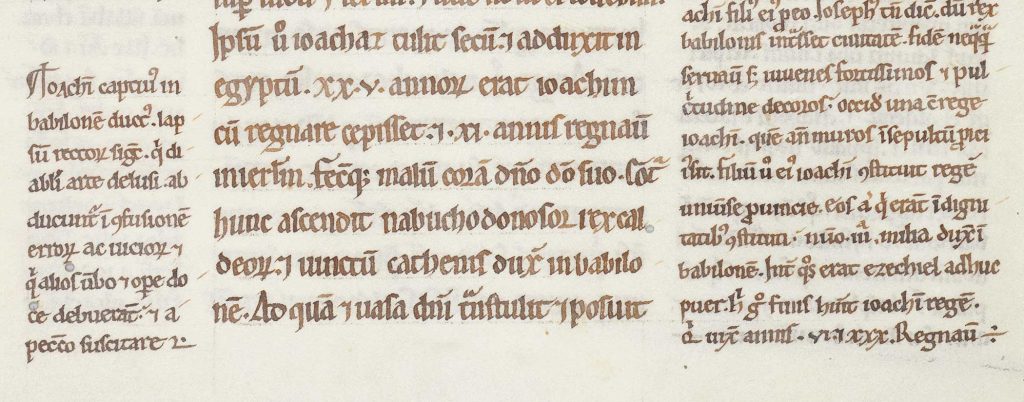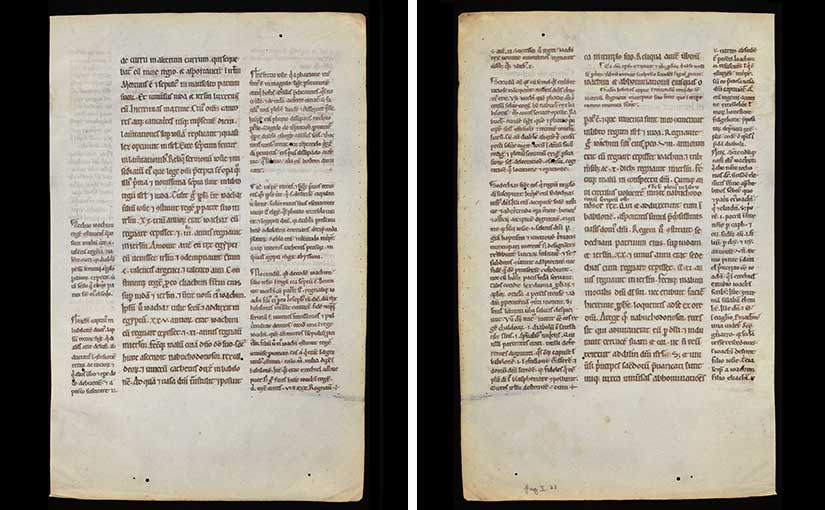by David T. Gura, Ph.D., Curator, Ancient and Medieval Manuscripts
This leaf (Frag. I. 21) comes from a glossed Bible produced in France during the twelfth century. Glossed bibles contained both scripture and explanatory comments (glosses) on the same page and were used in teaching and formation. The small format of this Bible (305 x 207 mm) allowed a master to bring it to the schoolroom easily for use. The layout of glossed bibles is intentional and functional: scripture occupies the central column and space is allotted for glosses to be written in the margins (marginal glosses) and between lines (interlinear glosses). The glosses can explicate the biblical text in literal, allegorical, moral, and even anagogical ways.


The particular text of this leaf comes from 2 Chronicles (II Paralipomenon). The function of interlinear and marginal glosses is distinct and can be observed in the following two examples. On the verso above the text misit Nabuchodonosor rex (“King Nebuchadnezzar sent”) an interlinear gloss is written: de hoc plenius in libro Regum scriptum est (“there is a fuller written account about him in the book of Kings”). The gloss is short and informative, directing the reader to find more information about a proper name.

Compare this to the gloss on Joachim copied in the left margin of the recto. This comment is more substantive and begins a literal/historical interpretation, then moves to allegorical and moral explications: “Joachim was taken prisoner and lead into Babylon; this signifies the fall of the righteous who were deceived by the Devil’s handiwork. They are lead astray into the ruin of heresy and vice. These people were supposed to teach others in word and deed and raise them from sin.” (Ioachim captiuus in Babilonem ductus, lapsum rectorum significat qui diaboli arte delusi, abducuntur in confusionem errorum ac uiciorum et qui alios uerbo et opere docere debuerant, et a peccato suscitare.)

The parent manuscript was formerly in the Benedictine abbey of Saint-Oyan de Joux (Saint-Claude), where it appeared in the abbey’s library catalogue dated 8 March 1492. The codex was later in the collection of William L. Clements of Bay City, Michigan (1860-1934) and then in possession of the Cleveland, Ohio, biblioclast Otto F. Ege by 1937. Leaves were also being offered for sale by Philip Duschnes (New York, NY) in 1943 and 1946.
Bibliography
Alexander Andrée, “Glossed Bibles,” in The Oxford Handbook of the Latin Bible, ed. H.A.G. Houghton, 208-224. Oxford University Press, 2023.
Auguste Castan “Le Bibliothèque de l’Abbaye de Saint-Claude du Jura: Esquisse de son histoire.” Bibliothèque de l’École des chartes 50 (1889): 301-354.
David T. Gura, A Descriptive Catalogue of the Medieval and Renaissance Manuscripts of the University of Notre Dame and Saint Mary’s College. Notre Dame (IN): University of Notre Dame Press, 2016, p. 429-430.
Scott J. Gwara, Otto Ege’s Manuscripts: A Study of Ege’s Manuscript Collections, Portfolios, and Retail Trade. Cayce, SC, 2013, 31-32, 39, 40, 71-72.
